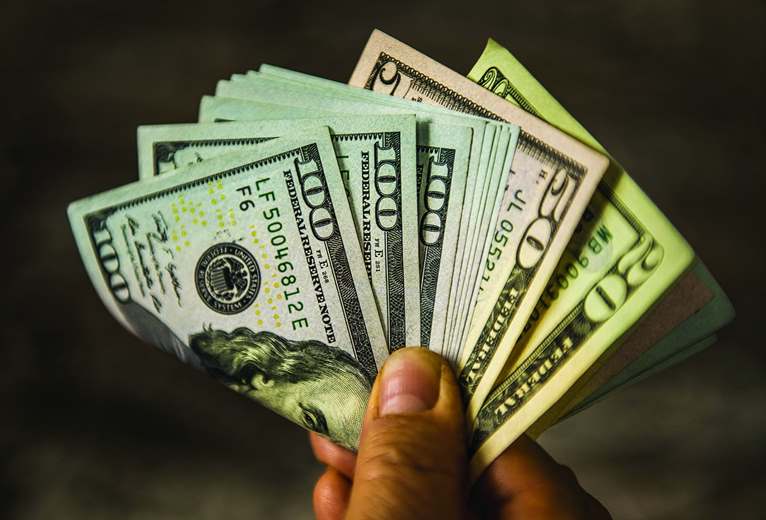Breaking News
Wyoming As Well As Sheridan And Johnson Counties Report Increase In Tax Revenue In FY 2022

Total sales and use tax collections in fiscal year (FY) 2022 rebounded at a strong pace, according to the State of Wyoming, Economic Analysis Division’s annual publication “Wyoming Sales, Use, and Lodging Tax Revenue Report.”
Total sales and use tax collections for FY 2022, reached $1.077 billion, which is an increase of 10.1 percent from the previous year.
The state imposed 4% tax collection grew 11.3%, in stark contrast to a 5.2% decline the previous year.
“With the strong rebound, the amount of total sales and use taxes for fiscal year 2022, nearly reached the record level of fiscal year 2015,” said Dr. Wenlin Liu, Chief Economist with the Economic Analysis Division. “However, it’s still 19.1 percent less if measured in inflation-adjusted dollars.”
Because locally imposed optional taxes often change during a fiscal year, an accurate comparison should only include the state-imposed 4% taxes to reflect changes in taxable sales over time.
The 47th edition of the report contains sales and use tax collection information categorized by the North American Industry Classification System (NAICS) super sector.
Additionally, the report provides information about sales tax collections for the retail trade sub-sector components as well as for the accommodation and food services sector.
Also included in the publication are yearly lodging tax collections by local entity.
The fading of the COVID-19 pandemic, reopening of the economy, and Federal stimulus payments to individuals and businesses all created robust demand for travel & tourism services, food services, and retail goods.
It also subsequently (starting in the second quarter of 2021) caused supply chain issues and boosted broad based inflation to the highest rate in 40 years.
Additionally, increased prices have caused oil and natural gas activities to rebound at a faster pace since 2021’s first quarter.
As a result, retail trade (excluding motor vehicles), the largest industry sector in terms of sales and use tax collections, increased 15.0 percent between FY 2021 and FY 2022.
Leisure & hospitality, another sector that contributes greatly to the sales and use tax collections, increased 30.0 percent.
Manufacturing, transportation, and auto & machinery leasing industries that act in tandem with mineral extraction operations, also grew more than 26.0 percent respectively.
Mining, Wyoming’s pivotal industry, reversed its trends of FY 2020 and FY 2021, and demonstrated the fastest growth of 57.5 percent due to the rebound in exploration activities.
However, the amount collected from this industry remains 34.0 percent lower than FY 2020.
Because of the reduced activities in wind power projects, wholesale trade and other services, including commercial machinery maintenance, decreased approximately 24.0 percent respectively.
Sales and use taxes from on-line shopping (a sub-sector of retail trade) increased 18.4 percent.
Across the state, year-over-year statewide sales and use tax collections are up in 18 counties, led by Campbell (36.5%), Platte (30.6%), and Teton (29.3%).
Johnson County was up 24.8% and Sheridan was up 15.7%.
“These counties benefited from either a rebound in mineral activities and/or booming outdoor and recreation tourism in FY 2022,” commented Dr. Liu.
Carbon County (-41.3%) experienced the steepest decline in collections from FY 2021 to FY 2022 due to reduced wind energy activities.
Lodging tax collections (excluding the newly imposed statewide lodging taxes), totaled $28.1 million for fiscal year 2022, up substantially (49.4%) from the $18.8 million collected the previous year.
Without counting the tax rate increase in Campbell County, total lodging taxes still grew 47.0 percent.
“Attributing to record breaking outdoor and park visitations, as well as a substantial increase in lodging prices, every county experienced a strong increase in lodging tax collections,” Liu continued.
Because the lodging tax rate changed from 2 to 4 percent on April 1, 2021, collections in Campbell County grew 150.3 percent from fiscal year 2021 to 2022.
For all other counties, Big Horn (66.3%) showed the fastest growth followed by Laramie (62.5%).
Five other counties, Johnson (53.1%), Park, Sheridan (52.0%), Sublette, and Teton also demonstrated over 50.0 percent growth rate each.
Teton County, which collects the largest amount of lodging tax (over $11 million) due to its geographical inclusion of Yellowstone and Grand Teton National Parks, saw an increase of 50.6 percent in collections from FY21 to FY22.
The collections from newly imposed (started on January 1, 2021) statewide (3% rate) lodging assessment
for Fiscal Year 2022 amounted to $30.9 million, where Teton County alone contributed $16.6 million or
53.8 percent.
In addition, collections (2% rate) from areas that did not have a local lodging tax before January 2021 were $0.2 million for Fiscal Year 2022.
Click here to view the Wyoming Sales, Use and Lodging Tax Revenue Report For FY 2022

